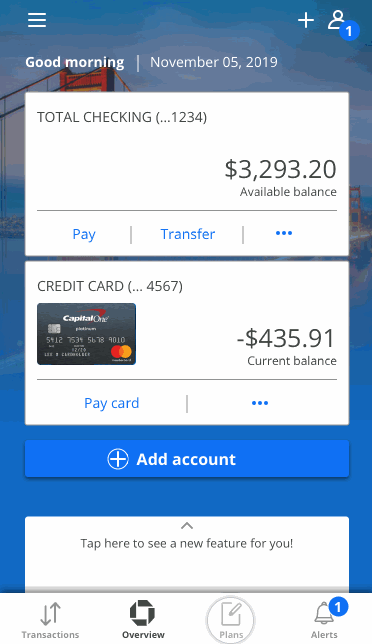
Helping Chase Bank consumers avoid over spending
Over spending is a problem many Americans face. I worked on a solution to help users to stay within their budget and save more money.
This was 120 hours, a 6-week project as part of Design Lab where I worked with a hypothetical project.
Client:
Team:
Timeline:
Tools:
Chase, JP Morgan
Independent work with the help of a mentor
6 weeks
Sketch, InVision, Maze, Illustrator, Photoshop


Research Findings
Compared Onboarding Processes
For competitive analysis, I tried three personal financial management apps (mint, Pocketguard, and digit) and compared their onboarding processes. As a user, the most difficult thing I experienced from every app was there were no instructions on how to start using them. Later on, I realized that their follow-up emails let me see their instructions on their websites but it would have been most useful to have been guided through this during the onboarding.
Assumption and Finding
From my experience, financial management is difficult, and only diligent people are good at tracking their expenses, making budgets, and managing their investments. My initial hypothesis about the project was that users made finance management into a habit, and the processes through which those users underwent to make that habit would give hints to other users who are not good at managing their finances. However, this assumption quickly collapsed during user interviews. It was an eye-opening finding that one mint user said that she doesn't make an effort to manage her finances: the app does everything from tracking her expenses to creating a nice pie-chart, and she just needs to check the app once in a while. Nowadays, personal financial management apps automate the process of entering individual transactions and making calculations onto notebooks or spreadsheets. One big takeaway from the user interview was that the users don't need to make a constant effort.
Define Problem
One pain point I found from the research was that people overspend. I have the same experience: paying with a credit card makes me feel less secure about spending money. I analyzed that some users didn't even recognize that overspending is a serious problem, so I set solving the problem of overspending as the goal of the project.
Persona
Through the survey and the user interviews, two personas came up. One is diligent and wants to know more about his or her personal finances. The other persona is less knowledgeable about personal finance and is less careful with his or her money.




Simulation and Test
From the user interviews and competitive analysis, the idea of setting up a monthly spending limit came up. Then, I simulated some situations to understand what would make users continue using the monthly spending limit feature and what would make them quit using it.
I also added a reminder feature that sends users positive messages whenever they are on the right track, notifications of the amounts they have spent, and warnings whenever they spend at a pace that would reach their limit sooner than they had planned. I added this feature to encourage people when they’re doing well and to make them reflect on their spending behavior when they’re not, leading them to use the monthly spending limit feature more frequently.

User Flow
Below is a user flow to set up a spending limit and alert.

Prototype
Visual Design & Prototype
After several tests, the visual and flow of the spending limit feature were finally decided. On-screen instructions were included, and information was presented in such a way that users don’t need to scroll down to see everything.




Overall
It was an exciting project. It was eye-opening to know that these personal financial management apps make troublesome processes effortless for users.